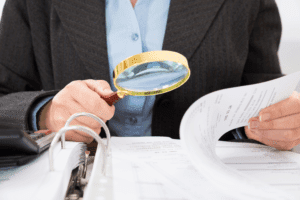
Also, these expenses don’t fit into other standardized general ledger accounts such as Wages, Salaries, Advertisements, etc., to name a few. Miscellaneous expenses refer to costs incurred by a business ledger account or individual that do not fit neatly into other standard categories of expenses. These expenses are usually small, infrequent, or irregular, and may not be directly tied to a specific department or function within the organization. The following list shows various business expenses that may be miscellaneous (“other expenses” on Schedule C), with suggestions about where they might be categorized. Qualifications for deducting some expenses are complicated, and some expenses may need to be amortized or depreciated over time rather than being deducted as expenses in a single year. The list of the most common nondeductible business expenses is short, but it includes items like political or lobbying expenses, fines, and penalties.

Managing Miscellaneous Expenses in Finance
- Your tax liability depends on your particular facts and circumstances..
- We have made this feature to book expenses to multiple expenses heads.
- You should consult your own professional advisors for advice directly relating to your business or before taking action in relation to any of the content provided.
- She has more than five years of experience working with non-profit organizations in a finance capacity.
One of the key implications of these miscellaneous expenses is their effect on the company’s profitability, which directly impacts the income statement. The accuracy of the income statement is crucial for investors and analysts to assess the company’s performance. These donations, whether in cash, goods, or services, not only reflect the company’s commitment to social responsibility but also offer potential advantages in terms of tax savings. It’s crucial for businesses to meticulously document and adhere to the IRS guidelines to ensure that these donations are eligible for deduction. Unexpected costs may arise from the fluctuating nature of charitable giving and the influence of economic conditions, making it essential for businesses to incorporate these factors into their financial planning. Diverse costs cover a wide range of miscellaneous expenditures, such as small office supplies, subscription services, and minor maintenance fees, all of which can add up and impact the company’s bottom line.
- These smaller, necessary costs, ranging from office supplies to travel incidentals, can quickly add up.
- Fines or penalties include amounts paid such as parking tickets, tax penalties, and penalties deducted from teachers’ paychecks after an illegal strike.
- Businesses that experience losses due to Ponzi schemes or similar fraudulent investments can deduct these as theft losses.
- When you have determined which expenses will be included in “other expenses,” you will need to list these expenses in detail on Part V of Schedule C, then transfer the total to line 27a.
- You can’t deduct professional accreditation fees such as the following.
- Accurate records also provide an important benchmark against which future performance can be measured, allowing individuals to compare how one period’s results stack up against another’s.
Miscellaneous expenses for small business owners

The existence of a fiduciary duty does not prevent the rise of potential conflicts of interest. These features help your team manage travel expenses without the hassle of paper forms or spreadsheets. Approvals can delay expense management, especially when processes are manual.
- Recording miscellaneous expenses in the income statement reduces the company’s net income, resulting in lower profits and taxes.
- However, someone who uses a basic laptop only occasionally for freelance jobs likely wouldn’t qualify.
- So, if you win $10,000 but lose $13,000, your deduction is limited to $10,000.
- Personal care and beauty is a category that many people see differently.
Start your 30-day free trial of our bookkeeping software today
Finance cost is the cost of borrowing money, which includes the interest charged on bank loans, overdraft fees, and dividends on redeemable shares. misc expenses examples The expense accounts listed above are usually sufficient to cater for all types of business expenditures. As with depreciation expense, repair and maintenance expenses need to be allocated between the cost of sales, selling expenses, and operating cost depending on where the assets are in use. An exception to this would be a retailer of stationery supplies or a printing press, in which case you will show these expenses as a part of the cost of sales.

Understanding how to manage these costs is crucial for maintaining financial health and ensuring accurate reporting. These expenditures may seem minor individually, but without proper oversight, they can lead to budgetary inefficiencies or distort an entity’s financial picture. Business start-up costs – in the US, business owners who are filing in their first year of operation can claim up to $5000 in business start-up costs under Other Expenses. Amounts above and beyond $5000 will need to be amortized over 180-month period. In Restaurant Cash Flow Management the US, all expenses are filed through Schedule C (Form 1040) and miscellaneous expenses are filed as “Other Expenses” through Part V line 48 of the form. In Canada, form T2125 is used for filing all expenses and miscellaneous expenses are filed as “Other expenses” on Part 4 of the form.

